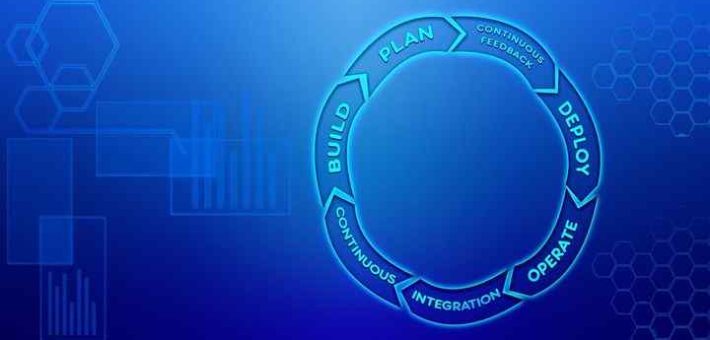More MCQs
HOME
Categories
Courses
Commerce and Finance MCQS
Business management MCQs
Operations Management MCQs
Production Planning and Control MCQs
Operational Capacity Management MCQs
Quality Management MCQs
Total Quality Management MCQs
Lean Manufacturing MCQs
Human Resource Management MCQs
Human Resource Planning MCQs
Human Resource Practices MCQs
Employee Motivation MCQs
Marketing Strategy MCQs
Marketing Communication MCQs
Consumer Behavior MCQs
Performance measurement MCQs
Balanced Scorecard MCQs
Production Planning and Control MCQs
A number of manufacturing systems have been developed to improve the planning and control of operational capacity these includes: Material requirements planning (MRP) and manufacturing resource planning II (MRPII), Enterprise resource planning (ERP), Optimized production technology (OPT). Here on MCQs.club we have designed simple Multiple-Choice Questions (MCQs) that covers the production schedule, MRP manufacturing, types of production planning and control, production scheduling and control. These MCQs are useful for Accountancy exams, Business Management exams and Competitive exams.
- A number of manufacturing systems have been developed to improve the planning and control of operational capacity. Operations management systems is classified into:
- Material requirements planning (MRP) and manufacturing resource planning II (MRPII)
- Enterprise resource planning (ERP)
- Optimized production technology (OPT)
- All of the above
- Materials requirements planning or MRP I is a computer system for scheduling production in a complex manufacturing environment where:
- Many raw materials and components are purchased from external suppliers
- The raw materials and components are used to manufacture subassemblies
- The sub-assemblies are assembled, possibly with other components and sub-assemblies purchased from external suppliers, into a finished product.
- All of the above
- Material requirements planning (MRP) is a computerized system for planning the requirements for:
- Raw materials
- Work in progress
- Finished goods
- All of the above
- Functions of Material requirements planning (MRP) include:
- Identifying firm orders and forecasting future orders with confidence.
- Using orders to determine quantities of material required.
- Determining the timing of material requirement and calculating purchase orders based on stock levels and Automatically placing purchase orders
- Scheduling materials for future production
- All of the above
- Benefits of Material requirements planning (MRP) include:
- Improved ability to meet orders
- Reducing stock holding
- The MRP schedule can be amended quickly if demand estimates change since the system is computerized.
- System can warn of purchasing or production problems due to bottlenecks or delays in the supply chain.
- All of the above
- The purpose of an MRP I system is to plan purchasing and production scheduling exactly, so that:
- all the raw materials and components are purchased and available in time to manufacture the sub-assemblies or finished products
- the finished products are manufactured on time to a planned production schedule.
- Both A&B
- None
- A bill of materials file is a database containing details of all the ________________ required for the manufacture of each type of sub-assembly and finished product.
- Components,
- Parts and materials
- Both A&B
- None
- Material requirements planning (MRP) will be suitable if it is not possible to predict sales in advance.
- False
- True
- MRP I is not appropriate when sales demand is difficult to estimate accurately in advance. When future sales cannot be estimated accurately, a MRP I production schedule based on the sales estimates is likely to result in production of the wrong products at the wrong time.
- The above statement is true
- The above statement is false
- The materials requirements are calculated from:
- Known future orders, i.e. firm orders already received from customers, plus
- A forecast of other future orders that, with a reasonable degree of confidence, will be received.
- The above is correct
- The above is incorrect
- Manufacturing resource planning II (MRPII) is an extension of the Material requirements planning system (MRP). It integrates into the MRP system other processes that are related to materials planning (e.g. financial requirements, equipment utilization, labour scheduling).
- The above statement is correct
- The above statement is incorrect
- Possible benefits of Manufacturing resource planning II (MRP II) include:
- Reduced stock-outs – better customer service
- Reduced inventory holding costs
- Improved plant/facilities utilization
- Reliable order fulfillment times
- Reduced ‘crisis management’ time
- (I) and (II) only
- (I) (II) and (V) only
- All of the above
- None
- Enterprise resource planning (ERP) is an extension of Manufacturing resource planning (MRPII). It integrates data from all operations with in the organization, e.g. operations, sales and marketing, human resources, purchasing.
- The above statement is incorrect
- The above statement is correct
- Identify which of the above statement is correct regarding Manufacturing resource planning II (MRPII).
- MRP II has been defined as ‘a game plan for planning and monitoring all the resources of a manufacturing company: manufacturing, marketing, finance and engineering’ (Wight).
- The advantage of MRP II over MRP I is that by integrating these additional planning activities, planning throughout the organisation is coordinated.
- Both A&B are correct
- None
- Manufacturing resource planning II (MRP II) is a sophisticated system that enables optimal inventory control based on the matching of supply and demand. Features include:
- Production planning, Capacity planning
- Forecasting, Purchasing, Order-entry
- Operations control and Financial analysis.
- All of the above
- Features of Enterprise resource planning (ERP) systems include:
- Allowing access to the system to any individual with a terminal linked to the system’s central server.
- Decision support features, to assist management with decision-making.
- Both A&B
- None
- An ERP system might provide an integrated database for:
- Manufacturing, purchasing, sales and marketing
- Finance and accounting, strategic reporting
- Human resource management, logistics (distribution activities), customer service.
- All of the above
- Advantages of Enterprise resource planning (ERP) include:
- Can easily share data between departments and across the organization.
- Better monitoring and forecasting with lower costs
- Processes can be stream lined, Improved customer service
- All of the above
- Disadvantages of Enterprise resource planning (ERP) include:
- Cost may be prohibitive
- May be too rigid to fulfill the need of the organization
- Technical support may be in adequate
- All of the above
- In optimized production technology (OPT), production scheduling is based on the capacity of the bottle neck, i.e. the constraint within the system, and the place of through put that the bottle neck can handle.
- The above statement is correct
- The above statement is incorrect
- Identify the main concepts in optimized production technology (OPT):
- A bottleneck or key constraint limits production capacity for the entire production system.
- Losing time in a bottleneck activity means time lost – and output lost – for the entire production system.
- Saving time in a non-bottleneck activity is a wasted effort, because it has no effect on output.
- There is no reason to produce items faster than a bottleneck activity can use it. Producing items at a faster rate than they can be used simply means that inventories will increase.
- Inventories are wasteful and expensive. They add no value.
- The process batch sizes should be variable, to optimise throughput, and should not be a fixed or standard size.
- (I) (II) and (IV) only
- (I) (III) and (IV) only
- All of the above
- None
- Optimized production technology (OPT) is used to:
- Identify the capacity constraints in the system.
- Schedule production to these capacity constraints.
- Try to identify ways of overcoming the capacity constraint, so as to increase capacity.
- Having done that, identify the next capacity constraint and schedule production to this constraint.
- For all of the above
—More to come soon—




